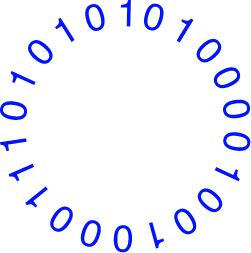If you’re wondering how Artificial Intelligence (AI) and Machine Learning (ML) in healthcare can lead to operational improvement, this article is for you.
Data Rich, Information Poor
One of the things we hear often from our hospital partners is they are “data rich but information poor”.
The advent of Internet of Things (IoT) devices means more and more data can be passively collected from people and things. In hospitals, this leads to a great deal of information that should be a veritable gold mine of actionable data to improve operational and logistical workflows. The challenge is that true actionable information is often lost in myriad, yet relatively ambiguous data points.
In some cases, it’s easy to yield actionable information. IoT temperature or humidity sensors easily record variations that can be trusted and acted on.
However, when real-time location data needs to be interpreted to yield workflow intelligence, the challenge is not so simple. Location data can show where equipment, patients and staff are, and yield information about how they move through the hospital in real time. But, in order to make intelligent assumptions on what the location and movement data means, an AI algorithm is needed.
The Importance of Analyzing Data Intelligently
There are nuances in the way data needs to be analyzed even in seemingly simple scenarios. Consider for example the measurement of the time between when a patient is moved into a room and an EKG is administered:
- If an EKG is already in the room, the room to EKG time recorded is zero.
- If the EKG machine is wheeled in 2 minutes after a patient is moved into the room, the room to EKG time is recorded at 2 minutes.
- However, consider the case when a second EKG machine is moved into the room 5 minutes after the patient is moved in. Now we need to interpret the asset movement and determine why the second EKG machine was moved in. In consultation with nurse leadership, this scenario indicates the first one was likely not usable. The software could then be configured to override the first room to EKG time and maintain the time the second EKG machine was moved in.
- It is also possible to automatically flag the first machine as faulty so it is not counted the next time the system calculates available equipment.
Data Validity and Completeness to Train AI Models
To a large extent, the validity and completeness of the data available to train AI models determines their outcome and performance.
When done manually, data capture is prone to errors and delays.
And even when data capture is automated, as in the case of real-time locating systems (RTLS), it is still subject to a lot of interpretation.
And to complicate it further, in a number of use cases, data from manual sources needs to be combined with automated RTLS data capture to provide the most value for a hospital.
Compiling and Interpreting Manual and Automated-RTLS Data
Another nuance in healthcare, is there are a number of instances where both manual and automated-RTLS data needs to be compiled and interpreted.
Some time-stamps are manually captured – like the time a blood sample was delivered to the lab. This could be crosschecked with the automated RTLS data showing the real-time patient movement into an ER room. If the lab sample is time-stamped before a provider or nurse went into the ER room, the software can ascertain that data variance and determine it’s probably inaccurate and needs to be corrected.
Tracking Staff vs. Tracking Equipment
Real world healthcare situations may also involve other approximations.
Tracking patients within hospitals provides a lot of valuable data as does staff locating. However, in some cases, staff locating may not be feasible. In these cases, hospitals may choose to track equipment that is paired with specific staff or departments.
For example, a cleaning cart could be reasonable indicator of how Environmental Services (EVS) staff moves and how long they spend in a particular location. However, since this is an approximation, the cleaning cart movements need to be rationalized to represent more accurate staff measurements.
Collected Information Trains Learning Models for Artificial Intelligence and Machine Learning Algorithms
Artificial Intelligence and Machine Learning algorithms use collected information to train learning models and build prediction modules using that accumulated knowledge.
The practical world of AI and ML is a lot different from classroom models. In classroom scenarios, data is filled in reasonably well, or in some cases intentionally left empty for some attributes, and it is easy enough to filter those out. In the real world though, there are no convenient blank values that can be filtered out with a few lines of clever code.
Here’s How to Leverage Artificial Intelligence and Machine Learning in Healthcare for Operational Improvement

TAGNOS solutions include the AI application of machine learning to automate the interpretation of data, and compensate for imperfections and variance in data collection. Our team works with each client to determine optimal process flow, alerts and escalations and configures a solution that translates your data into true actionable information.
To view the original article, please click here.
